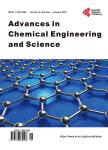Compositionally Driven Viscometric Behaviors of Poly (Alkyl Methacrylates) in Lubricating Oils
Compositionally Driven Viscometric Behaviors of Poly (Alkyl Methacrylates) in Lubricating Oils作者机构:Research and Development The Lubrizol Corporation Wickliffe USA
出 版 物:《Advances in Chemical Engineering and Science》 (化学工程与科学期刊(英文))
年 卷 期:2022年第12卷第2期
页 面:65-86页
学科分类:081704[工学-应用化学] 07[理学] 08[工学] 0817[工学-化学工程与技术] 070303[理学-有机化学] 0703[理学-化学]
主 题:Viscosity Index Shear Stability Index Polymethacrylates Lubricating Oils
摘 要:Viscosity index (VI) and shear stability index (SSI) are standard methods used in the lubricant industry to determine temperature-viscosity dependency and resistance to product degradation, respectively. A variety of oil-soluble polymers, including poly(alkyl methacrylates) (PAMAs) are routinely used to control these properties in fully-formulated liquid lubricants. In this report, we use reversible addition-fragmentation chain transfer (RAFT) polymerization to precisely target identical degrees of polymerization in a family of PAMAs with varying lauryl, hexyl, butyl, ethyl, and methyl groups. Then, expanding on previous methodology reported in the literature, we establish structure property relationships for these PAMAs, specifically looking at how intrinsic viscosity [η] and Martin interaction parameters KM relate to VI and SSI characteristics. While the intrinsic viscosity [η] is associated with the volume of macromolecules at infinite dilution, the parameter KM reflects the hydrodynamic interactions of polymer chains at actual polymer concentrations in lubricating oils. In this paper, we show that the dependence of VI on the non-dimensional concentration c/c* (or c[η]) can be presented in a form of master curve with shift factors proportional to KM that decreases with increasing size of alkyl groups. This finding implies that even in the dilute regime, the coil-expansion theory used to explain the effect of macromolecules on VI should be complemented with the idea of hydrodynamic interactions between polymer molecules that can be controlled by the choice of alkyl chains in the family of PAMAs.



